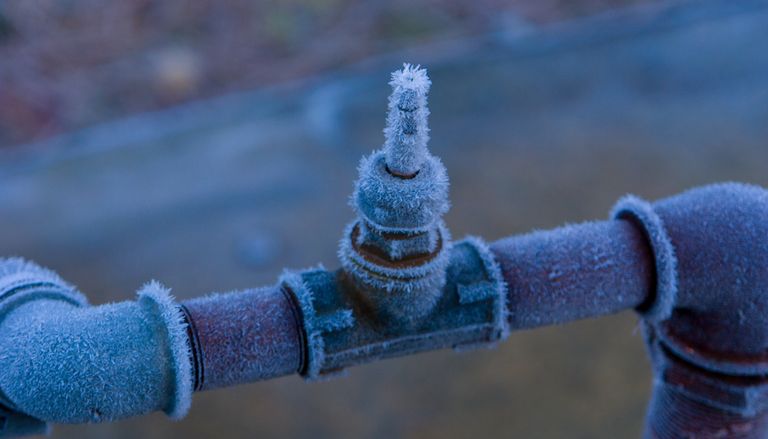In this article down the page you will discover a good deal of amazing insights in relation to Helpful Tips to Prevent Frozen Pipes this Winter.

Winter can ruin your pipes, especially by freezing pipes. Here's just how to avoid it from happening and what to do if it does.
Introduction
As temperatures drop, the danger of frozen pipelines increases, possibly resulting in pricey repair work and water damages. Recognizing exactly how to stop frozen pipelines is vital for house owners in chilly environments.
Recognizing Frozen Pipes
What causes pipelines to freeze?
Pipelines freeze when subjected to temperature levels below 32 ° F (0 ° C) for expanded periods. As water inside the pipelines ices up, it expands, putting pressure on the pipeline walls and possibly causing them to burst.
Threats and problems
Frozen pipelines can bring about supply of water disturbances, home damages, and expensive repair services. Burst pipes can flooding homes and create substantial architectural damage.
Indicators of Frozen Pipes
Determining icy pipelines early can stop them from bursting.
Exactly how to determine icy pipes
Seek decreased water flow from taps, unusual smells or sounds from pipelines, and noticeable frost on revealed pipelines.
Prevention Tips
Protecting susceptible pipes
Wrap pipes in insulation sleeves or utilize warm tape to safeguard them from freezing temperatures. Focus on pipelines in unheated or outside areas of the home.
Heating methods
Maintain interior areas adequately warmed, especially areas with plumbing. Open up cupboard doors to enable cozy air to distribute around pipes under sinks.
Safeguarding Exterior Plumbing
Garden hoses and exterior faucets
Separate and drain garden tubes before winter season. Mount frost-proof spigots or cover exterior taps with protected caps.
What to Do If Your Pipelines Freeze
Immediate actions to take
If you presume frozen pipelines, maintain taps available to ease pressure as the ice melts. Make use of a hairdryer or towels soaked in warm water to thaw pipelines slowly.
Long-Term Solutions
Architectural adjustments
Think about rerouting pipes far from outside wall surfaces or unheated locations. Include extra insulation to attics, cellars, and crawl spaces.
Upgrading insulation
Invest in high-grade insulation for pipes, attics, and wall surfaces. Appropriate insulation helps maintain constant temperature levels and decreases the risk of icy pipelines.
Final thought
Preventing frozen pipelines requires proactive actions and fast feedbacks. By recognizing the causes, signs, and safety nets, home owners can safeguard their pipes throughout cold weather.
5 Ways to Prevent Frozen Pipes
Drain Outdoor Faucets and Disconnect Hoses
First, close the shut-off valve that controls the flow of water in the pipe to your outdoor faucet. Then, head outside to disconnect and drain your hose and open the outdoor faucet to allow the water to completely drain out of the line. Turn off the faucet when done. Finally, head back to the shut-off valve and drain the remaining water inside the pipe into a bucket or container. Additionally, if you have a home irrigation system, you should consider hiring an expert to clear the system of water each year.
Insulate Pipes
One of the best and most cost-effective methods for preventing frozen water pipes is to wrap your pipes with insulation. This is especially important for areas in your home that aren’t exposed to heat, such as an attic. We suggest using foam sleeves, which can typically be found at your local hardware store.
Keep Heat Running at 65
Your pipes are located inside your walls, and the temperature there is much colder than the rest of the house. To prevent your pipes from freezing, The Insurance Information Institute suggests that you keep your home heated to at least 65 degrees, even when traveling. You may want to invest in smart devices that can keep an eye on the temperature in your home while you’re away.
Leave Water Dripping
Moving water — even a small trickle — can prevent ice from forming inside your pipes. When freezing temps are imminent, start a drip of water from all faucets that serve exposed pipes. Leaving a few faucets running will also help relieve pressure inside the pipes and help prevent a rupture if the water inside freezes.
Open Cupboard Doors
Warm your kitchen and bathroom pipes by opening cupboards and vanities. You should also leave your interior doors ajar to help warm air circulate evenly throughout your home.

Do you like more info about Prevent Frozen Pipes ? Give a remark directly below. We will be pleased to hear your insights about this piece. We hope to see you back again before long. Sharing is good. You won't know, you will be doing someone a favor. Many thanks for your time spent reading it.
Call Us Today
Comments on “Crucial Tips to Avoid Frozen Pipes in Winter: Specialist Guidance”